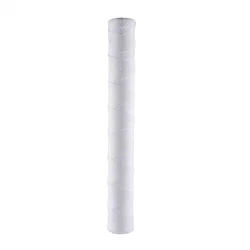Choosing the Best Purifier Filter for Your Home: A Comprehensive Guide
2024-08-24
Selecting the right purifier filter for your home can be a daunting task, given the variety of options available. From HEPA filters to activated carbon and beyond, understanding the features and benefits of each type will help you make an informed decision. Here’s a comprehensive guide to choosing the best purifier filter for your home.
1. Assess Your Air Quality Needs
Before choosing a purifier filter, it’s important to assess your air quality needs based on the specific issues you want to address in your home.
Allergies and Asthma: If you or your family members suffer from allergies or asthma, a HEPA filter is highly recommended. It effectively captures allergens like pollen, dust mites, and pet dander, providing relief from respiratory symptoms.
Odors and Chemicals: For homes with cooking odors, smoke, or chemical fumes, an activated carbon filter is essential. It adsorbs odors and volatile organic compounds (VOCs), improving the overall air quality.
General Air Quality: For general air quality improvement, a combination of HEPA and activated carbon filters can address a wide range of contaminants, including allergens, odors, and pollutants.
2. Understanding Filter Types
Different types of purifier filters are designed to target specific contaminants. Here’s a breakdown of the most common filter types and their functions:
HEPA Filters: High-Efficiency Particulate Air (HEPA) filters are known for their ability to capture small particles with high efficiency. They are ideal for removing allergens and airborne particles, making them a popular choice for allergy sufferers.
Activated Carbon Filters: These filters use activated carbon to adsorb odors, gases, and chemicals. They are effective at removing smells from cooking, pets, and smoke, as well as VOCs from household products.
Pre-Filters: Pre-filters are used to capture larger particles before they reach the main filter. This helps extend the lifespan of HEPA and activated carbon filters and improves overall performance.
UV-C Filters: Ultraviolet (UV-C) filters use UV light to kill bacteria, viruses, and mold spores. They are often used in combination with other filters to provide additional purification.
3. Size and Compatibility
When selecting a purifier filter, ensure that it is compatible with your air purifier model and the size of the room where it will be used.
Filter Size: Check the dimensions and specifications of the filter to ensure it fits your air purifier. Using the correct size is crucial for optimal performance and efficiency.
Room Size: Consider the size of the room where the air purifier will be used. Some filters are designed for larger spaces, while others are suitable for smaller rooms. Match the filter’s capacity with your room size for the best results.
4. Filter Maintenance and Replacement
Proper maintenance and timely replacement of filters are essential for ensuring continued effectiveness and efficiency.
Replacement Schedule: Follow the manufacturer’s guidelines for filter replacement. HEPA filters typically need to be replaced every 6-12 months, while activated carbon filters may need replacement every 3-6 months.
Cleaning: Some pre-filters can be cleaned and reused, but it’s important to follow the manufacturer’s instructions to avoid damaging the filter.
Monitor Performance: Pay attention to any changes in the performance of your air purifier, such as reduced airflow or unusual noise, which may indicate that the filter needs to be replaced.
5. Consideration of Advanced Features
Modern air purifiers come with advanced features that can enhance their performance and convenience. Consider these features when choosing a purifier filter:
Smart Technology: Some air purifiers are equipped with smart technology that allows you to monitor air quality and filter status via a smartphone app. This can help you keep track of filter performance and receive alerts for replacement.
All-in-One Filters: Some air purifiers feature all-in-one filters that combine HEPA, activated carbon, and pre-filters in a single unit. These filters offer comprehensive purification and simplify maintenance.
6. Budget Considerations
While it’s important to invest in a high-quality filter, consider your budget and the long-term costs of maintenance and replacement.
Initial Cost: Higher-quality filters may have a higher initial cost, but they often provide better performance and durability.
Long-Term Costs: Factor in the cost of replacement filters and maintenance when budgeting for your air purifier. Some filters may require more frequent replacements, impacting overall costs.
7. Eco-Friendly Options
For environmentally conscious consumers, eco-friendly filter options are available. Look for filters made from sustainable materials or those that can be recycled.
Recyclable Filters: Some filters are designed to be recyclable, reducing environmental impact.
Sustainable Materials: Filters made from sustainable or biodegradable materials are a more eco-friendly choice.
In conclusion, choosing the best purifier filter for your home involves assessing your air quality needs, understanding different filter types, ensuring compatibility, and considering maintenance and budget factors. By making an informed decision, you can enhance the air quality in your home, improve your health, and create a more comfortable living environment.



